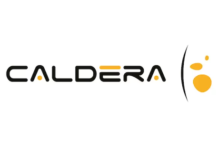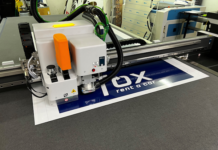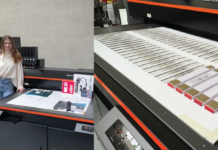According to Sensient Inkjet Textile, manufacturers need to be sure that every material they use within their operations is both safe and sustainable. Sustainability isn’t just about protecting the natural environment. Truly sustainable operations require the consideration of both people and planet – from the safety of the workforce through to the wellbeing of the end consumer.
This focus on safety affects the entire textile supply chain: the 2019 ‘State of Fashion’ study by McKinsey identified a key consumer shift being younger generations’ passion for social and environmental issues beyond traditional corporate social responsibility (CSR). This consumer awareness of the lifecycle and impact of products means that, as a result, less ‘safe’ brands and businesses are being shunned by the general public.
Over recent years, numerous studies have demonstrated the harmful effect of certain substances that were once commonly encountered in the textiles manufacturing process. Many of these substances of concern are now reduced in use, restricted, or even banned depending on the regulations in the specific country and according to both generic and customer textile standards.
1. Volatile organic compounds (VOCs)
A large group of chemicals that can be found in many everyday products such as paint, varnishes, inks, cleaning and cosmetic products, VOCs are compounds of carbon that evaporate at normal indoor air temperatures and include, among others, chloroform, benzene and tetrachloroethane. Although some VOCs are not considered dangerous, their use is restricted as several are carcinogenic, while others are very toxic or irritant. Found in high densities in more traditional inks that are solvent-based, they not only have potentially detrimental health effects, but also react with nitrogen oxides to produce ozone pollution and smog.
The benefits of alternative ink technologies such as water-based inks and UV-curable solutions are, however, reducing the use of these solvent-based inks, in which the VOC components may represent up to 95% of the ink by weight. In comparison, the VOC components in water-based inks tend to represent around 25% or less of the overall weight, while UV-curable inks ensure that, once the ink is cured, the VOC compounds are no longer volatile and won’t evaporate.
2. Heavy metals
Defined as any metallic element that has a relatively high density on the atomic scale, the heavy metals that should be avoided in textile applications include, among others: arsenic, nickel, tin, zinc, iron, copper and manganese. Small amounts of these metals are common naturally and some are necessary for good health, but when our bodies are exposed to large amounts, it can result in poisoning.
In the textile industry, heavy metals can be found across a variety of materials and substances, most often as the components of dyestuffs. Aside from the effects on human health, heavy metals can also have a detrimental impact on the environment. The pre and post-treatment processes used in textile printing mean that wastewater can contain high levels of these substances, which can in turn be introduced to natural water bodies. Although many new inkjet solutions such as disperse dyes, pigment inks and water-based inks do contain a small amount of heavy metal, as it is used as a catalyst for the synthesis of raw materials, it is typically present in a much smaller amount than in traditional inks and dyes.
3. Formaldehyde
A volatile chemical widely used across the textile industry, formaldehyde can be used as a dyeing and printing fixative or binding agent and can allow for better saturation of some dyes and inks used to colour textiles. However, its use is restricted due to the sensory irritation and strong skin sensitisation it can cause, its carcinogenic properties, and other side effects including watery eyes, coughing and nausea. Limited in its use in European countries such as Germany, Finland and Norway, other countries such as the United States don’t set specific levels but require manufacturers to clearly label the amount of formaldehyde within the product.
4. Chlorobenzenes and chlorotoluenes
As organic compounds made of chlorine, carbon and hydrogen, chlorobenzenes and chlorotoluenes are most commonly used as auxiliaries for the dyeing, printing and coating of textiles. However, their use is restricted as they can be very toxic to aquatic life – and can also be toxic to humans through both inhalation and skin contact. Similarly, chlorobenzenes can cause damage to the lungs, liver and kidneys, while chlorotoluenes can be irritant to both skin and eyes.
Although no EU legal requirement currently exists to ban substances such as chlorobenzenes and chlorotoluenes, heavy metals, formaldehyde, and organotin compounds, in the textiles industry, it has become an accepted sector-wide requirement for textile manufacturers to avoid their use, as the industry seeks to regulate these substances of concern. Indeed, many leading apparel brands have completely banned their usage in production.
5. Organotin compounds
Used in the textile industry for their preservative and antibacterial properties, and to ensure that clothes don’t form unpleasant odours, organotin compounds include, among others, substances such as tetrabutyltin, tributyltin oxide and triphenyltin acetate. Based on the tin element bonded to carbon, organotin compounds are typically found in PVC materials, but are also found in polyurethane (PU) where they are used as heat stabilisers. Due to their toxicity to aquatic life, and also their potentially damaging effect on both human fertility and unborn children if a high concentration is absorbed through the skin, their use is restricted.
To submit your news please, contact journo@practicalpublishing.co.za
Submit your news and video content to journo@practicalpublishing.co.za
Subscribe to our YouTube channel, read the top 5 stories weekly on WhatsApp or sign up to our newsletter.
SENSIENT
https://www.sensientinkjet.com/















